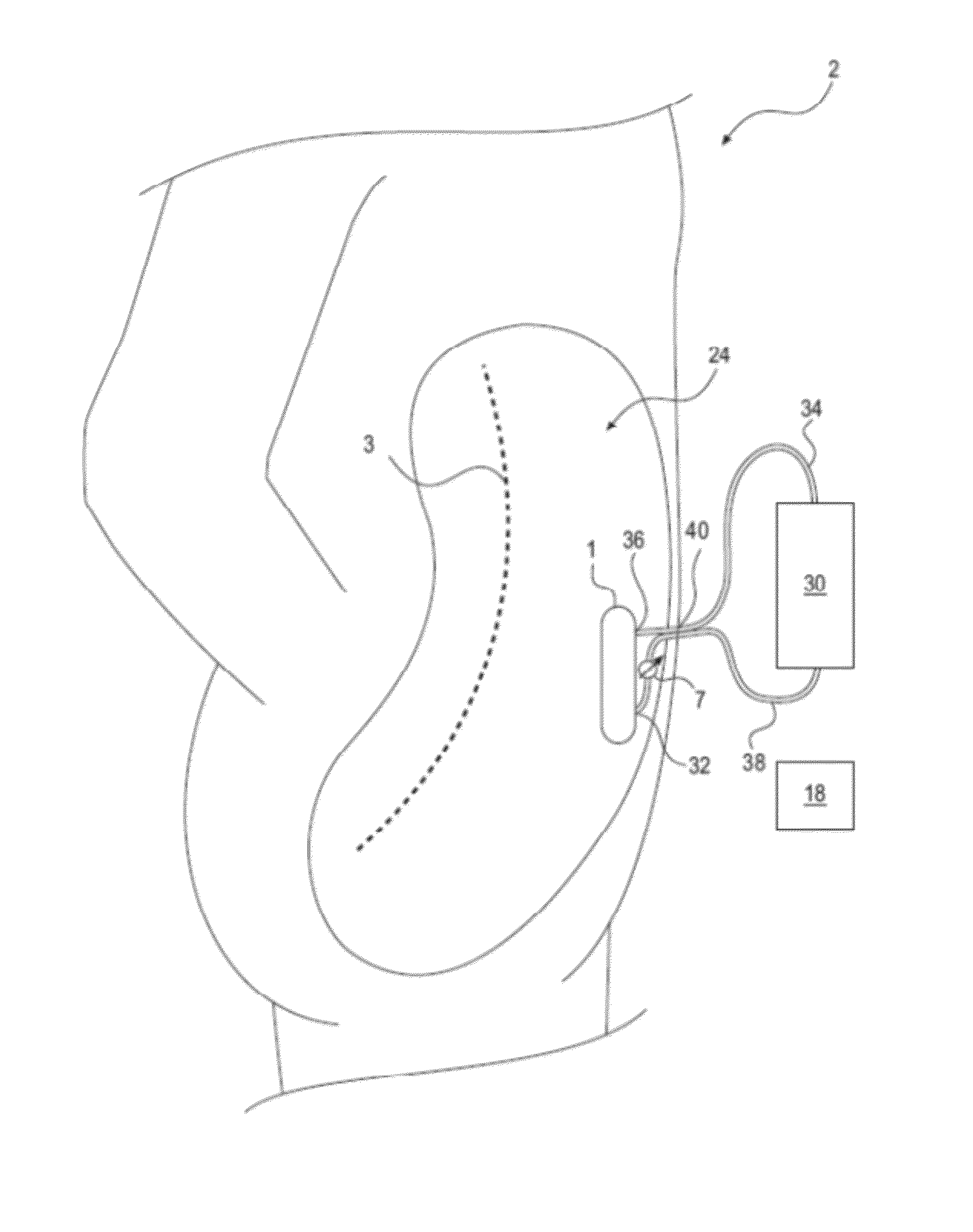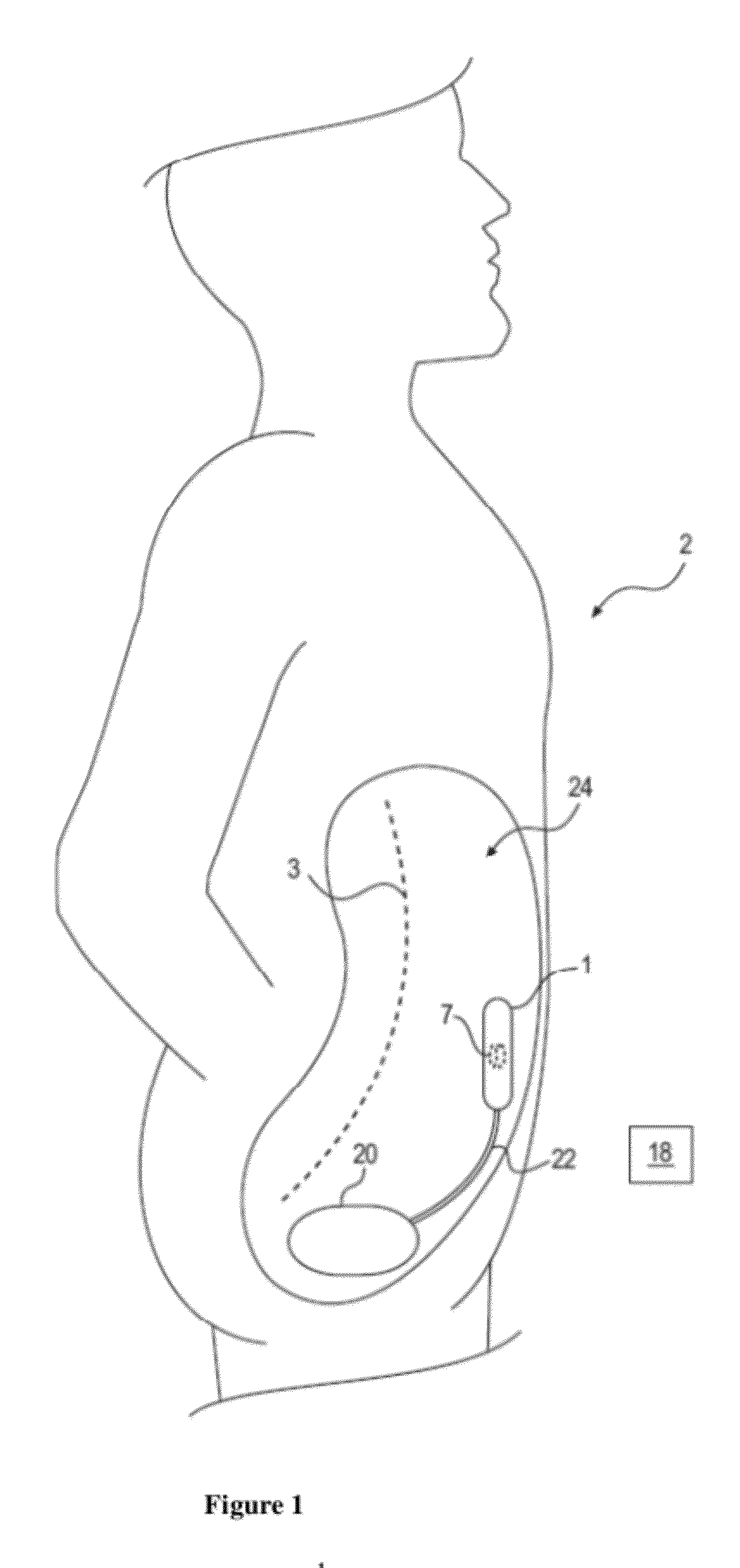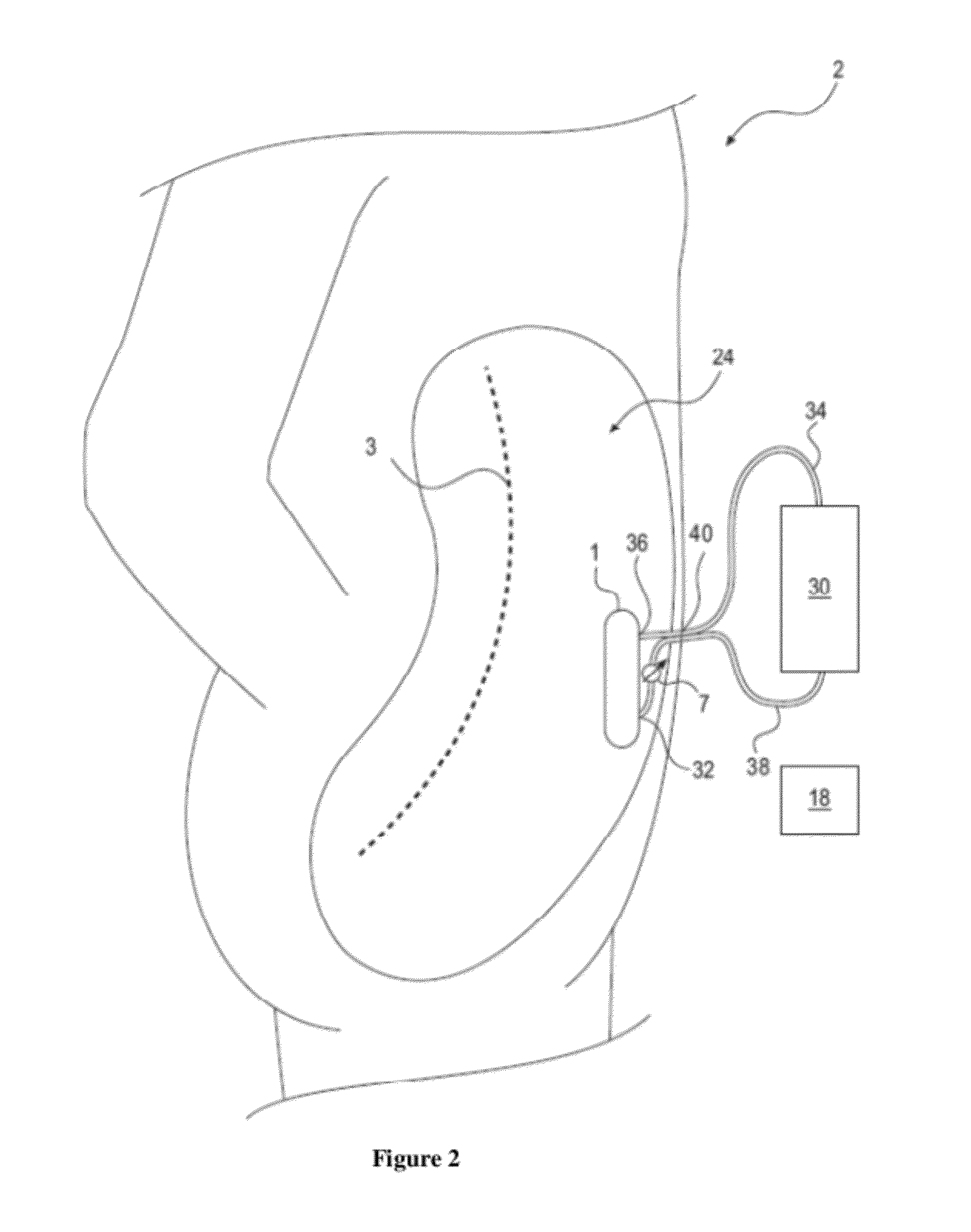Method and device to treat kidney disease
a kidney disease and kidney technology, applied in the field of kidney disease treatment, can solve the problems of kidney function severely compromised, fluid accumulation, death of all people with ckd, etc., and achieve the effects of reducing the concentration of waste components
- Summary
- Abstract
- Description
- Claims
- Application Information
AI Technical Summary
Benefits of technology
Problems solved by technology
Method used
Image
Examples
example
[0138]Cylinder shaped cages were formed using stainless steel and polyester meshes. Ends of the cylinders were capped using poly (N,N-dimethylacrylamide), also known as PDMA. A picture of the stainless steel cage can be seen in FIG. 9. The size the cage in FIG. 9 is shown relative to a Japanese 100 yen coin. Some of the cages were wrapped in poly vinyl alcohol (PVA) sheets. All cages were sterilized by dipping them in alcohol prior to implantation.
[0139]Cages were subcutaneously implanted into rats on the back of the animals. Animals were anesthetized with ethyl ether and small incisions were made to place two cages in the back of each animal. Two weeks after the implantation of the cages, the animals were sacrificed and the cages were removed. As shown in FIGS. 10 and 11, the cages developed fibrotic capsules during the two weeks of implantation. FIG. 10 shows an exemplary cage formed from a polyester mesh having a fibrotic cage. FIG. 11 shows an exemplary cage formed from stainles...
PUM
 Login to View More
Login to View More Abstract
Description
Claims
Application Information
 Login to View More
Login to View More - R&D
- Intellectual Property
- Life Sciences
- Materials
- Tech Scout
- Unparalleled Data Quality
- Higher Quality Content
- 60% Fewer Hallucinations
Browse by: Latest US Patents, China's latest patents, Technical Efficacy Thesaurus, Application Domain, Technology Topic, Popular Technical Reports.
© 2025 PatSnap. All rights reserved.Legal|Privacy policy|Modern Slavery Act Transparency Statement|Sitemap|About US| Contact US: help@patsnap.com



